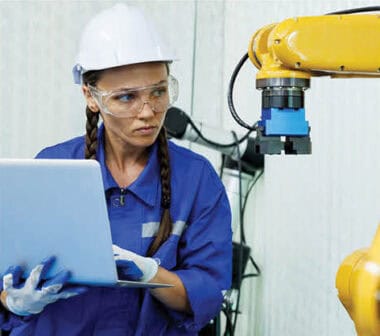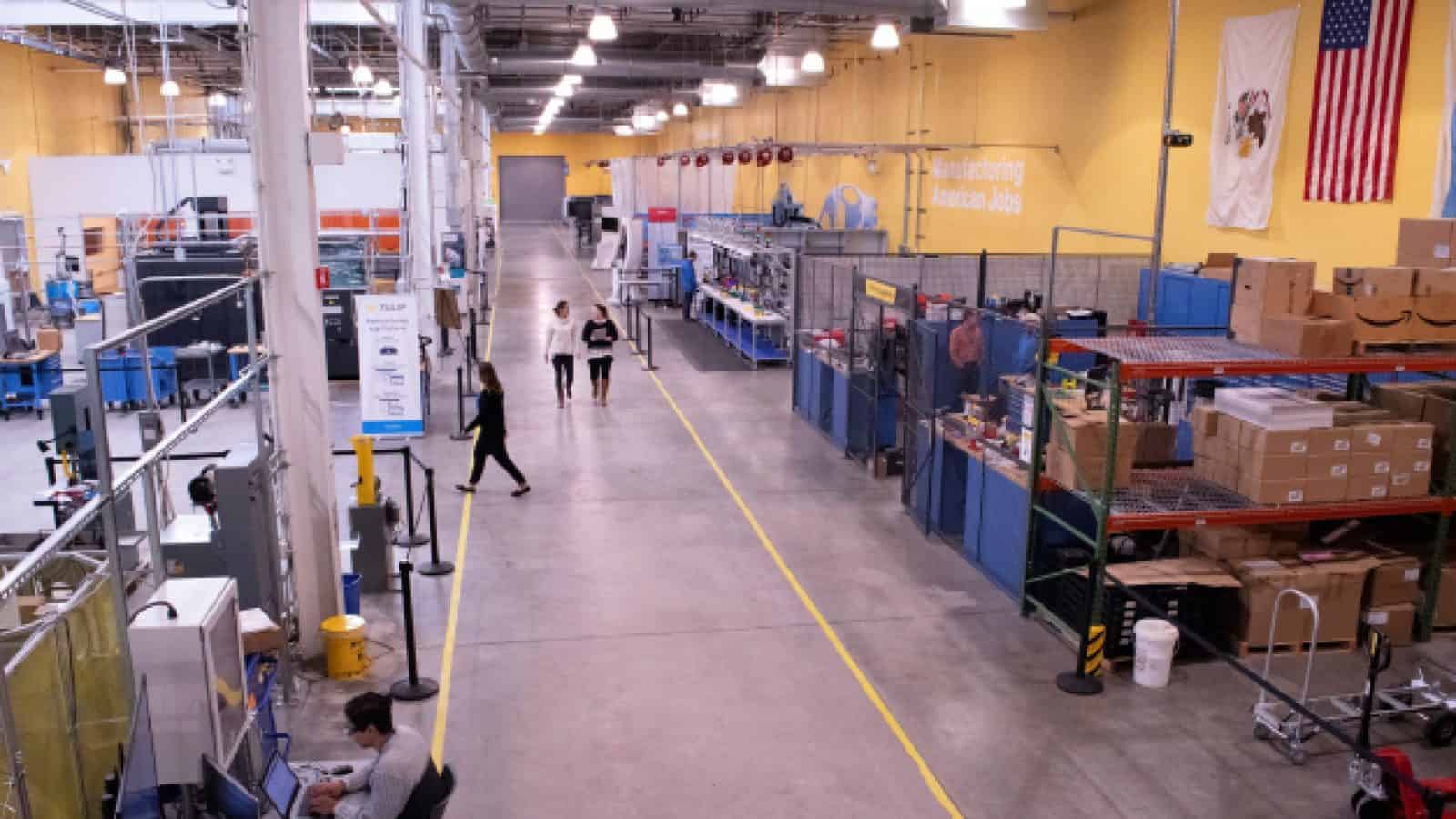M4.0 Technology as a Catalyst for Enduring Change

Emerging technologies are creating new opportunities for manufacturers – including a greater role for women in operations.

TAKEAWAYS:
● It is now essential to balance cost and process optimization with improvements in safety, resilience, and quality.
● Women are increasingly becoming a vital part of the manufacturing workforce, and their unique perspectives are essential in guiding digital transformation strategies.
● The focus on safety, resilience, and quality in digitalization efforts aligns with creating a more inclusive and appealing work environment.
In manufacturing, emerging tech is fast becoming mainstream. From digital twins and data analytics to cloud computing and generative AI, more and more companies are using digital solutions to transform their operations, supply chain and customer experiences. Emerging tech has moved from the edge to the mainstream, and it’s reshaping the industry’s future.
It’s affecting everyone too. Domestic or international, established or startup – manufacturers of all shapes, sizes and locations are seeing their business model upended by this rapid shift in the digital landscape. Yet, broad discrepancies remain in exactly where firms are on that journey.
For example, while many manufacturing companies continue to wrestle with shopfloor connectivity and data gathering, others are well down the road of leveraging insights and AI to automate and improve decision-making. For some, the cloud and Internet of Things have been the limit of their digital ambitions so far; yet, elsewhere, robotics and nanotechnology are already taking hold.
In certain cases, there are even disparities in the technological sophistication of different plants within the same organization.
A Dualistic Approach
What’s crucial, therefore, is that leaders take time to clearly and honestly understand how far along the digital transformation path they are. Why? Because this will enable them to identify issues, pinpoint what and where to improve, and figure out how to keep pace with technology’s fast expanding capabilities.
For Hiral Rao, who leads the EY Digital Manufacturing and Mobility Cloud platform, the best way to do so is with a “dualistic approach.”
First and foremost, this means focusing on short-term challenges, such as boosting the connectivity of data models to create a single, reliable source of truth across the organization and building less siloed relationships with technology providers.

Understanding their place on the digital journey will enable leaders to identify issues, pinpoint where to improve, and keep pace with technology’s fast expanding capabilities.
But, at the same time, it means having one eye on the future – what the long-term impact of Industry 4.0 on the organization will be. How will it change their risk management, for example? Where are they going with automation? How will technologies like AI and machine learning fit in? And what skills do they need to train and recruit their workforce?
As Rao says, “A dualistic strategy responds to the core operational challenges of today while also preparing manufacturers to answer the key strategic questions of tomorrow.”
Evolving to Lean 4.0
Equally important is firms’ willingness to evolve past the lean operating principles that have traditionally defined the industry. Efficiency and effectiveness will still be foundational to competitiveness, but this is no longer about achieving only highly repeatable processes, lowest cost and least time.
Instead, firms must balance cost and process optimization with the need to improve safety, resilience and quality. This requires investment in better data integration to feed developing technology and sharpen decision-making, as well as deep knowledge of the people and processes across different production facilities. Where these vary, leaders who are seeking to scale at an enterprise level must look beyond centrally controlled pilot programs and rollouts, favoring a more nuanced testing and implementation approach across individual plants.
This all intermingles with Rao’s dualistic approach too. By recognizing and understanding where they’re currently delivering on their digital journey, along with where they’re not, firms can move quicker to embed technologies that fill current performance and productivity gaps and deliver value in the future. Specifically, it means:
- Maximizing what they already have, ensuring that they have the right culture, processes and skills to fully harness their existing technologies.
- Experimenting and adapting to move forward, testing novel solutions firmwide and plant by plant to unlock efficiencies, boost resilience and improve customer experiences.
- Collaborating to scale, partnering with stakeholders across the organization itself and, where appropriate, within its broader ecosystem to scale solutions for enterprise impact.
A Woman’s World?
There is another notable intersection here too. While manufacturing remains male-dominated, there is quantifiable progress in attracting female workers to the industry. Right now, 30% of manufacturing jobs are currently filled by women. It’s important for this to be improved to keep pace with other industries. After all, 47% of the overall U.S. workforce is female.
Emerging tech can play a key role in doing so, attracting a new generation of women into manufacturing. Rather than project the physical, labor-intensive image of the past, firms can now offer female workers a vision of creativity, collaboration, and innovation, all rooted in a digitally enabled future, encompassing everything from the smarter use of data to the responsible deployment of AI.

Efficiency and effectiveness will still be foundational to competitiveness, but it’s no longer about achieving only highly repeatable processes, lowest cost and least time.
In other words, manufacturing stands on the brink of not one, but two, revolutions at the same time. As the industry’s digitalization accelerates, the profile of the workforce will rapidly recalibrate too. Fresh skills and perspectives will join advanced technologies in creating smarter factories; more actionable insights on products, quality and risks; more accurate forecasting; and more resilient supply chains.
Ultimately, these twin forces could mean that manufacturers find themselves better prepared to sense and respond to all dynamics of an ever-shifting market. After a decade of challenges, a new and exciting future is emerging. M
About the author:

Lisa Caldwell is EY Americas Business Consulting Leader.
The views reflected in this article are the views of the author and do not necessarily represent the views of Ernst & Young LLP or other members of the global EY organization.
